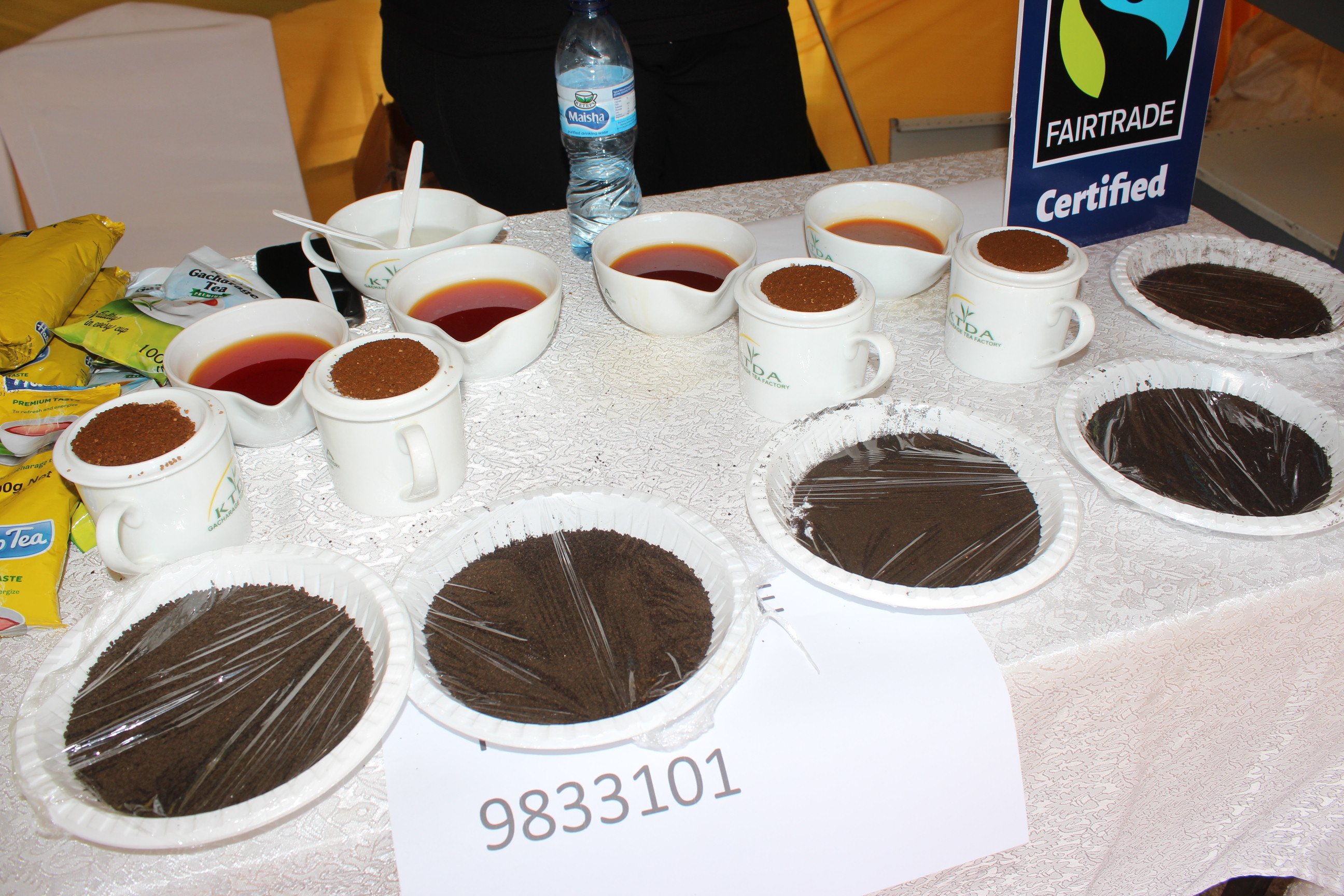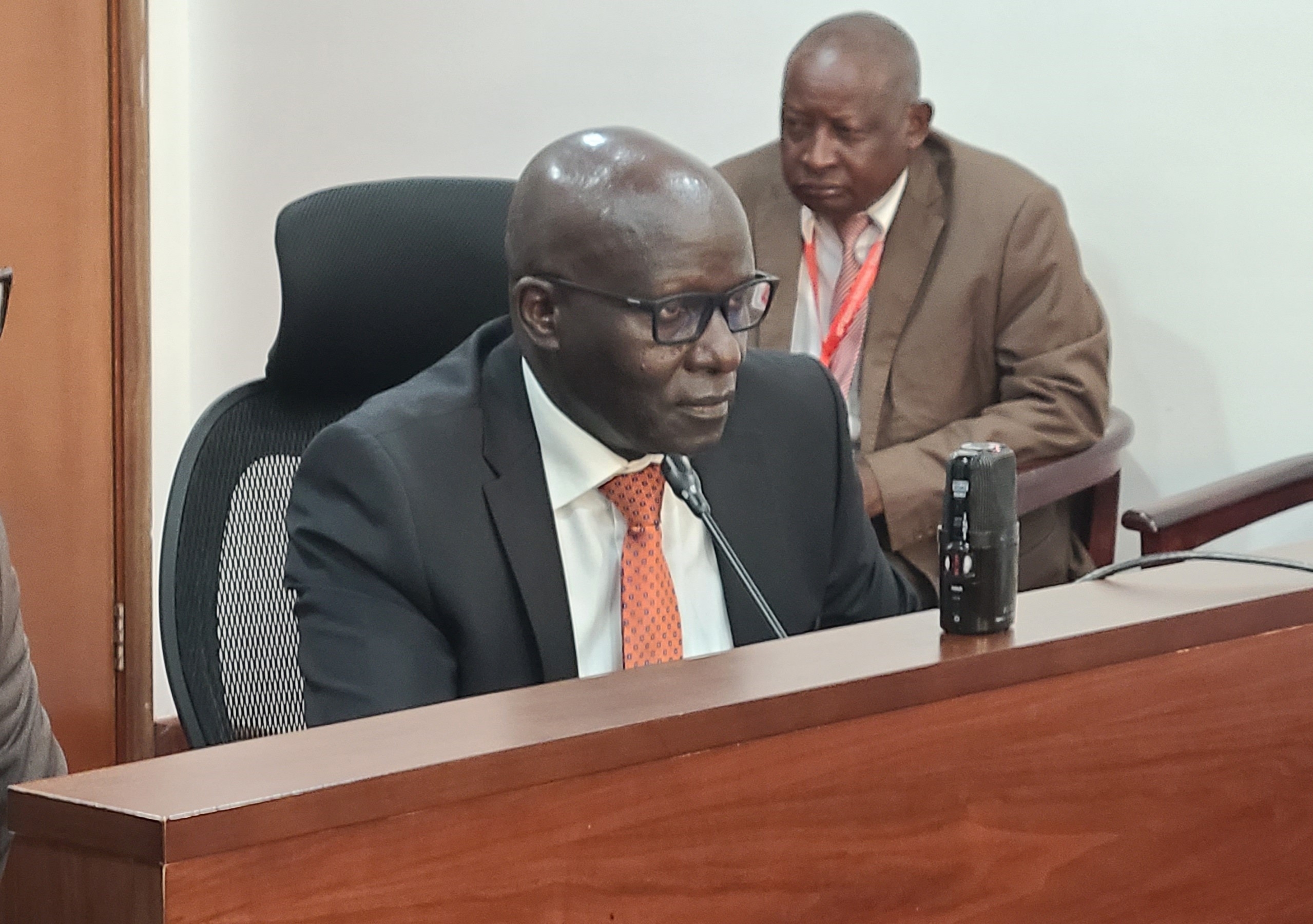
 Brewed teas displayed during the International Tea Day celebrations held at Gacharage tea factory in Murang'a
Brewed teas displayed during the International Tea Day celebrations held at Gacharage tea factory in Murang'aClimate change has hit tea farmers in the country, with reduced production that is set to cut their earnings.
A report released by the Tea Board of Kenya on the sector’s performance in August this year confirmed that tea production in the month dropped by 4.5 per cent from 38.6 million kilogrammes recorded in the same month in 2024 to 36.87 million.
Tea farmers produced 39.04 million kilogrammes in July 2025 and 42.41 million were harvested in June.
The board's CEO Willy Mutai attributed the declining output to dry and cold weather coupled with reduced rainfall.
The East of Rift region was worst affected after recording minimal precipitation averaging less than 13mm daily while the West of Rift recorded daily precipitation of up to 16mm, with Nandi receiving the highest rainfall averaging between 27.1mm to 98.8mm.
Tea output within the East of Rift dropped by 16 per cent from 7.53 million kilos recorded in August last year to 6.3 million.
The decline recorded in the West of Rift region was smaller at 1.68 per cent from 31.09 million kilogrammes to 30.56 million.
“Small-holder tea factories under the management of KTDA suffered the most from the reduced production due to their dominance in the regions worst affected by weather changes,” Mutai said in the report.
The state-owned Nyayo Tea Zones whose tea farms act as a buffer across gazetted forests in the east and west of Rift areas also recorded a significant decline in their production from 327,455kg to 215,107kg.
During the month, specialty tea output was 1.187 million kg, about 3.2 per cent of the total production, and were dominated by orthodox tea produced by plantation and independent tea factories while a small quantity consisted of green and purple tea from cottage factories.
Owing to the effects of hot and dry weather, and reduced rainfall experienced between February and August, cumulative production reduced by 10.82 per cent from 402.79 million kilos recorded during the same period last year to 359.16 million.
“Going by the trend for the first eight months, and taking into consideration the depressed rainfall expected in the last quarter of the year, the annual production is projected at 553 million kilogrammes, a significant reduction from the 594 million recorded last year and the 570 million recorded in 2023”.
During August, a total of 22.86 million kilos of Kenyan tea were sold in the Mombasa auction compared to the 25.11 million sold in the corresponding month last year.
Mutai noted that the continued lessened production and improved demand resulted in a higher absorption of teas on offer at 65 per cent compared to 52 per cent for the same period last year.
The weighted average monthly auction price for tea was slightly lower at $2.14 per kilogramme against the $2.20 recorded in the same month last year but slightly higher that the $2.05 recorded in July this year.
“Notably, prices of tea followed the quality and prevailing market conditions with ‘Best’ category of CTC leaf, and ‘Dust’ grades which were well sorted and with brighter liqours and appearance fetching more compared to medium and plainer categories,” the CEO added.
Buyers from the UK market were selective, while Russians had reduced inquiries and South Sudanese buyers kept off the auction. This resulted in reduced uptake of the BP1 tea mainly exported to these regions and whose absorption was less than 30 per cent.
Auction prices have been adversely affected by the lower buying participation by some key markets and higher quantities of carry-over stocks occasioned by increased production in the last two years, coupled with the effects of global economic shock experienced in most markets.
Delay in shipments to Europe and North Africa due to attack of vessels along the Red Sea route by rebels and market access challenges in Sudan due to internal conflict have also affected the sector.
Auction prices are however expected to rise from December owing to reducing stocks and higher demand during winter.
According to the report, tea exports reduced from 55.57 million kilos in July to 52.23 million in August and were shipped to 59 export destinations.
With 20.83 million kilos exported to Pakistan, the country maintained its position as the leading export destination for local tea, accounting for 40 per cent of total export volume.
Other key export destinations were Egypt (8.21 million kilos), UK (4.18 million), UAE (3.15 million), Russia (2.48 million), India (1.31 million), Jordan (1.28 million), Iran (1.14 million), Kazakhstan (0.945 million) and Poland (0.938 million).
Value-added tea exports amounted to 1.09 million kilos, about 2.1 per cent of the total export volume, and were shipped to 30 countries.
Local tea sales, on the other hand, stood at 2.96 million kilos, a reduction from the 3.28 million recorded in the same month last year and 3.71 million recorded in 2023.
The removal of VAT on all Kenyan teas and zero rating of tea packaging materials is, however, expected to raise local tea consumption due to raised affordability.
INSTANT ANALYSIS
A report released by the Tea Board of Kenya on the sector’s performance in August confirmed that tea production in the month dropped by 4.5 per cent from 38.62 million kilos recorded in the same month in 2024 to 36.87 million. According to the report, tea exports reduced from 55.57 million kilos in July to 52.23 million in August and were shipped to 59 export destinations. Delay in shipments to Europe and North Africa due to attack of vessels along the Red Sea route by rebels and market access challenges in Sudan due to internal conflict have also affected the sector.

















